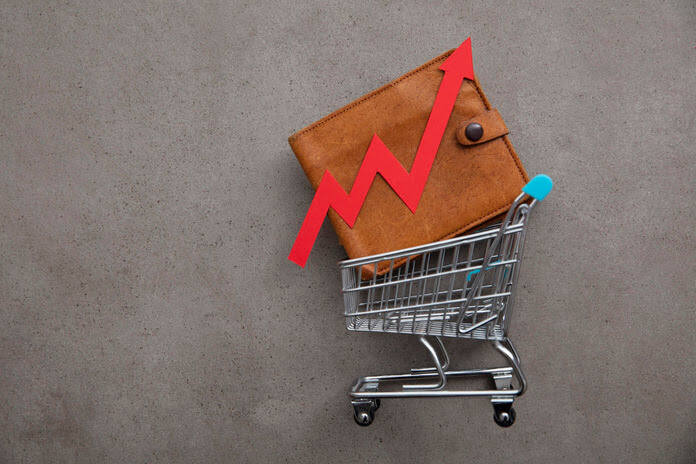Inflation in the United States displayed a slight uptick in July, breaking a streak of 12 consecutive months of decline. However, when excluding the volatile costs of food and energy, often referred to as core inflation, the increase is the smallest monthly rise witnessed in nearly two years. This indicates that the Federal Reserve’s efforts in raising interest rates have continued to moderate the pace of price hikes.
The recent inflation data reported by the government on Thursday reveals a 3.2% year-over-year increase in overall consumer prices. This is up from a 3% annual rise in June, which marked the lowest rate seen in over two years. While the current figure remains well below last year’s peak of 9.1%, it still exceeds the Fed’s target of 2% inflation.
Market observers, economists, and investors closely watch core inflation figures to glean insights into the trajectory of potential inflationary pressures. In the transition from June to July, core inflation remained modest at 0.2%, attributed to easing prices in categories such as groceries, electronics, and used vehicles.
Rubeela Farooqi, Chief U.S. Economist at High-Frequency Economics, commented, “Core prices are moving in the right direction. That will be welcome news to (the Fed’s) policymakers.”
The data on prices presented on Thursday will significantly influence the central bank’s decisions regarding the continuation of interest rate hikes. The Federal Reserve has elevated its benchmark rate 11 times since March 2022, resulting in a 22-year high, as part of its strategy to manage inflation.
On a monthly basis, overall prices increased by 0.2% in July, with a substantial portion attributed to rising housing costs. Excluding housing expenses, economist Paul Ashworth of Capital Economics calculated a 0.1% decline in core prices from June to July.
Food prices, which have been pressuring Americans’ budgets for a prolonged period, experienced a modest 0.2% increase from June to July. Notably, prices for items like eggs, meat, beer, and dairy products declined, although food prices have risen by 4.9% over the past 12 months. Additionally, prices of televisions, audio equipment, and pet food experienced a decline last month.
Used vehicle prices faced a second consecutive month of decline, with a 1.3% dip from June and a 5.6% decrease from the previous year. The surge in used car prices last year was primarily due to a shortage of computer chips that disrupted new vehicle production, pushing buyers toward the used car market. The chip shortage has since eased, resulting in a rebound in new car production and reduced demand for used vehicles.
Analyzing consumer inflation on a three-month basis, the annualized rate from May through July was 1.9%, the slowest pace in three years. Economists often favor the three-month figure as it captures inflation trends with less volatility compared to month-to-month figures.
While the initial phases of conquering inflation may have progressed relatively smoothly, experts suggest that gasoline prices, for example, have already significantly decreased from their peak average of over $5 a gallon in June of the previous year, following Russia’s invasion of Ukraine.
The initial surge in inflation during 2021 was primarily driven by supply chain disruptions. Ports, factories, and freight facilities struggled to cope with the rapid economic rebound after the pandemic-induced recession of 2020, leading to delays, parts shortages, and price hikes. However, supply chain challenges have diminished over the past year, alleviating upward pressure on goods prices. In June, prices of durable manufactured goods even experienced a decline.
The current challenge for the Federal Reserve lies in tackling persistent inflationary pressures within service industries like restaurants, hotels, and entertainment venues, where wages contribute significantly to costs. Labor shortages have prompted many businesses in these sectors to raise wages substantially.
Notably, the Labor Department’s report last week indicated a 4.4% year-over-year increase in average hourly wages in July, surpassing expectations. Companies typically respond to higher labor costs by increasing prices, thereby fueling inflation.
Despite these challenges, the moderation in inflation, coupled with a resilient job market, has sparked hopes that the Federal Reserve might achieve a delicate “soft landing” – raising rates sufficiently to curb inflation without triggering a harsh recession.
Sal Guatieri, Senior Economist at BMO Capital Markets, remarked, “Barring a hot August CPI and labor market report, the progress should encourage the (Fed) to skip a rate hike on Sept. 20 and, in our view, for the remainder of this exceptional tightening cycle. That can only increase the prospect of a soft landing.”
While many economists and market analysts believe that the July rate hike will be the Fed’s final move, over 90% of traders anticipate no further rate hikes next month, as indicated by the CME Group’s FedWatch Tool.
Featured Image: Freepik @ inkdrop









